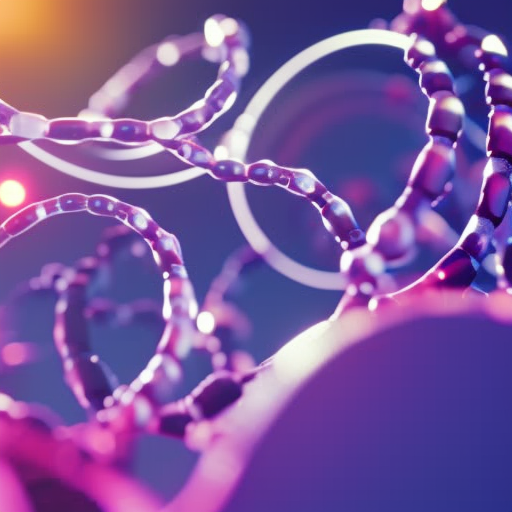Molecular Nanotechnology: Revolutionizing the World at the Atomic Scale
Molecular nanotechnology (MNT) is a field of science and technology that focuses on manipulating matter at the atomic and molecular scale to create new materials, devices, and systems with unprecedented properties and functionalities. It involves the design, synthesis, and manipulation of individual molecules and atoms to construct complex structures and machines.
Understanding the Basics
At its core, MNT is based on the idea that if we can manipulate individual atoms and molecules, we can engineer materials and devices with precise control over their properties. This level of control allows us to create materials that are stronger, lighter, and more durable than anything currently available. It also opens up possibilities for creating new types of electronics, sensors, energy storage systems, and medical devices.
Applications of Molecular Nanotechnology
MNT has the potential to revolutionize a wide range of industries and fields. Here are some of the key areas where MNT is expected to have a significant impact:
1. Electronics and Computing: MNT could lead to the development of smaller, faster, and more efficient electronic devices. By using molecular-scale components, it is possible to create transistors and other electronic components that are much smaller and more energy-efficient than current technologies.
2. Materials Science: MNT enables the creation of new materials with tailored properties. For example, carbon nanotubes and graphene, both products of MNT, have exceptional strength, electrical conductivity, and thermal properties. These materials could be used in a wide range of applications, from lightweight and strong composites to energy storage devices.
3. Medicine and Healthcare: MNT has the potential to revolutionize medicine by enabling precise drug delivery systems, targeted cancer therapies, and regenerative medicine. Nanoscale devices could be used to deliver drugs directly to specific cells or repair damaged tissues at the molecular level.
4. Energy: MNT could play a crucial role in developing clean and efficient energy technologies. For example, nanoscale materials could improve the efficiency of solar cells, enable better energy storage systems, and facilitate the production of hydrogen fuel cells.
5. Environmental Remediation: MNT could be used to develop innovative solutions for cleaning up pollution and addressing environmental challenges. Nanoscale materials could be designed to selectively remove pollutants from water and air, making it possible to tackle issues such as water contamination and air pollution.
Challenges and Future Outlook
While MNT holds tremendous promise, there are several challenges that need to be addressed. One of the key challenges is the precise control and manipulation of individual atoms and molecules. Developing the tools and techniques required for such precise control is a complex task.
Another challenge is the potential risks associated with nanotechnology. As with any emerging technology, there are concerns about the environmental and health impacts of nanomaterials. It is crucial to understand and mitigate these risks through proper regulation and responsible development.
Despite these challenges, the future of MNT looks promising. Researchers and scientists are making significant progress in developing new techniques and materials at the nanoscale. As our understanding of nanotechnology continues to advance, we can expect to see more breakthroughs and applications in the coming years.
In conclusion, molecular nanotechnology has the potential to revolutionize various industries and fields by enabling precise control over matter at the atomic and molecular scale. From electronics and materials science to medicine and energy, MNT offers unprecedented opportunities for innovation and advancement. While there are challenges to overcome, the future of MNT looks bright, and its impact on society could be transformative.












